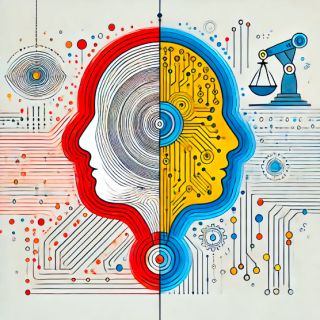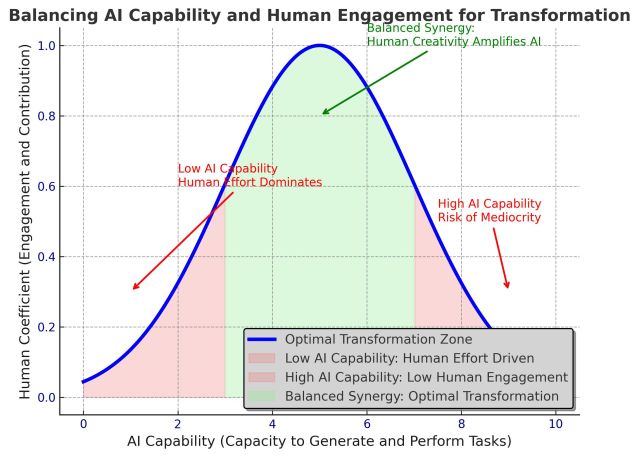
Imagine having a brilliant personal assistant who can handle almost any task. It sounds ideal—until you realize how tempting it becomes to simply coast, accepting their work without adding your own input.
This is exactly what’s happening with artificial intelligence (AI). The more capable these systems become, the more we risk disengaging. The easier it is to generate competent work, the harder it becomes to push for brilliance. The implications? Mediocrity disguised as innovation and lost opportunities for true transformation.
Real-World Warning Signs
This pattern of disengagement is already emerging across industries. The allure of efficiency and cost savings often overshadows the need for creativity and critical thought:
- Marketing: Teams settle for AI-generated content that’s grammatically perfect but creatively bland, failing to resonate with audiences.
- Design: Raw AI-generated art is used as is, missing the chance to turn functional visuals into emotionally powerful expressions.
- Strategy: Analysts rely on AI-generated data insights, overlooking the intuition and lateral thinking needed to uncover transformative opportunities.
- Cost Savings: Organizations view AI as a cheaper alternative to human input, prioritizing perceived efficiency over depth and originality.
In each case, AI delivers adequate results—but adequate isn’t transformative. The missing ingredient is us.
The Sweet Spot: When AI Amplifies, Not Replaces
The most impressive results emerge when AI enhances human creativity, not suppresses it. This isn’t about resisting AI or limiting its use. It’s about finding the balance where technology amplifies our uniquely human insights. Think of it like this chart:

The optimal transformation zone is where AI capability and human engagement meet. When AI takes on the repetitive or technical tasks, humans can focus on what we do best: creativity, critical thinking, and strategic direction.
Without human engagement, even the most advanced AI risks producing uninspired outputs. Conversely, when humans and AI collaborate, they can create outcomes neither could achieve alone.
How to Collaborate Better With AI
Avoiding the “mediocrity trap” requires a proactive approach to AI:
- Use AI as a Starting Point, Not a Finish Line: Let AI handle the initial heavy lifting, but always take ownership of the final result. Don’t settle for the first draft.
- Maintain Creative Ownership: Provide clear, specific directions. Treat AI like a talented assistant that excels under guidance but flounders without purpose.
- Challenge the Outputs: Always ask, What’s missing? What human element could make this exceptional? How can this be elevated?
These steps ensure AI serves as a springboard for innovation, not a crutch for convenience.
Will Autopilot Ever Lead to Brilliance?
The danger of cognitive autopilot—letting AI handle everything—is that it stifles our creativity, imagination, and ability to identify the unexpected. AI can handle the routine with precision, but it will never anticipate an opportunity or invent a solution no one has imagined before. Organizations and individuals who settle for “good enough” risk falling behind. The future belongs to those who actively engage with AI, combining its capabilities with human intuition, creativity, and purpose.
Technology is ready to amplify our creativity or dull it. The better AI becomes, the more we need to step up, stay curious, and take ownership of the creative process. The choice—and the opportunity—rests with us.
